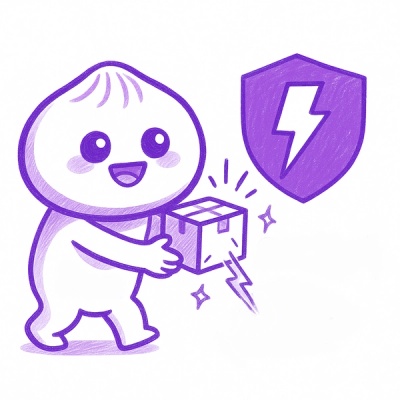
Research
/Security News
Weaponizing Discord for Command and Control Across npm, PyPI, and RubyGems.org
Socket researchers uncover how threat actors weaponize Discord across the npm, PyPI, and RubyGems ecosystems to exfiltrate sensitive data.
@synonymdev/slashauth
Advanced tools
SlashAuth is a Slashtags protocol for authorization over a Slashtag's connection.
Once authentication is done both sides share a private encrypted drives dedicated to each other, and can exchange data over, as an asynchronous communication channel.
npm i @synonymdev/slashtag @synonymdev/slashauth
import { Slashtag } from '@synonymdev/slashtag';
import { SlashAuth } from '@synonymdev/slashauth';
const initiator = new Slashtag({
keyPair: Slashtag.createKeyPair(),
protocols: { SlashAuth },
});
// Responder's wallet will have access to the initiator's profile
await initiator.setProfile({ name: 'Alice' });
// Access the protocol instance from anywhere in the application
const auth = slashtag.protocol(SlashAuth);
// After getting the slashauth:// url from the Responder,
// you can use it to read the Responder's profile
const responder = sdk.slashtag({ url: slashauthURL });
// Get the server's profile if it exists, so you can ask
// user for confirmation to authenticate to that Responder
const profile = await serverSlashtag.getProfile();
auth.once('error', errorHandler);
// On success, Initiator will get the details of the Drive that
// the Responder created for the Initiator
auth.once('success', ({ drive }) => {
// Success handler
});
// Connect to the server and send the token in the url `?q=<token>`
auth.request(url);
import { Slashtag } from '@synonymdev/slashtag';
import { SlashAuth } from '@synonymdev/slashauth';
const responder = new Slashtag({
keyPair: Slashtag.createKeyPair(),
protocols: { SlashAuth },
});
// Initiator's wallet will have access to the Responder's profile
await responder.setProfile({ name: 'Bob' });
const auth = slashtag.protocol(SlashAuth);
auth.on('request', async ({ token, peerInfo, drive }, response) => {
// Try resolving user's profile from their Slashtag
const initiator = request.peerInfo.slashtag;
// The Responder can send either a success or error message
try {
authorize(request.token, initiator);
response.success();
} catch (e) {
response.error(e.message);
}
});
// Listen on the Slashtag.key
await slashtag.listen();
function authorize(token, initiator) {
// Check the token against server's sessions, clientIDs, etc.
// Check if the user is already registered, blocked, etc.
}
// Generate a slashauth:// url and pass it to the initiator
// token can be a random string, or a session token or a clientID, etc.
SlashAuth.formatURL(slashtag.url, token);
Before any of the SlashAuth's messages are exchanged, the Initiator and Responder are already connected over a secure connection using Noise Protocol.
More about Slashtags connections here.
So both the Initiator's and Responder's keys are already known and all subsequent communication is trusted.
This protocol adds two features:
Contacts
Initiator 'Alice' wants to establish a connection to Responder 'Bob'.
slashauth:, Bob's base32 encoding publicKey, and a unique token for this session.Once the request is accepted, now both Alice and Bob add each other as contacts, with drives for Incoming and Outgoing asynchronous messages.

Login & Registration

FAQs
Authorization using slashtags
We found that @synonymdev/slashauth demonstrated a not healthy version release cadence and project activity because the last version was released a year ago. It has 7 open source maintainers collaborating on the project.
Did you know?

Socket for GitHub automatically highlights issues in each pull request and monitors the health of all your open source dependencies. Discover the contents of your packages and block harmful activity before you install or update your dependencies.

Research
/Security News
Socket researchers uncover how threat actors weaponize Discord across the npm, PyPI, and RubyGems ecosystems to exfiltrate sensitive data.

Security News
Socket now integrates with Bun 1.3’s Security Scanner API to block risky packages at install time and enforce your organization’s policies in local dev and CI.

Research
The Socket Threat Research Team is tracking weekly intrusions into the npm registry that follow a repeatable adversarial playbook used by North Korean state-sponsored actors.